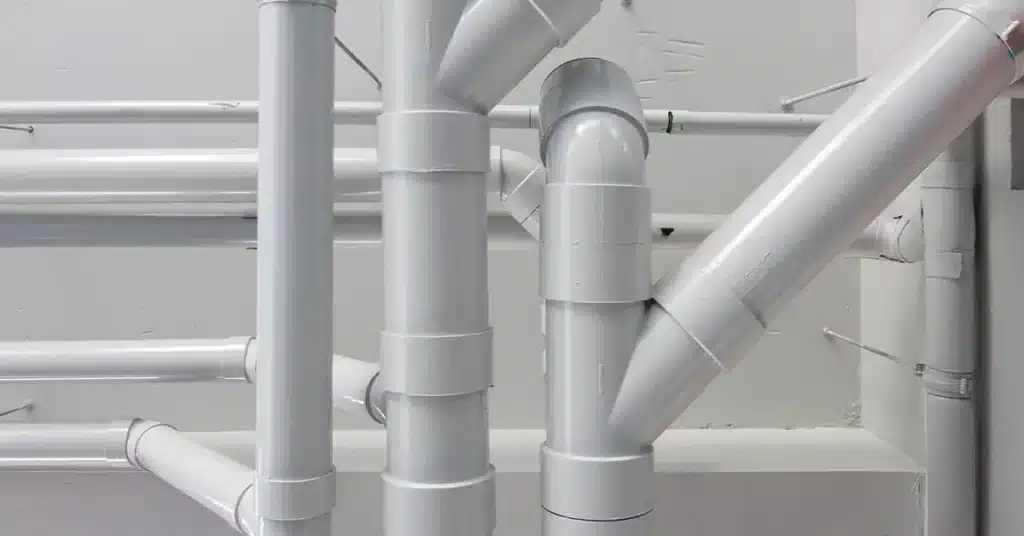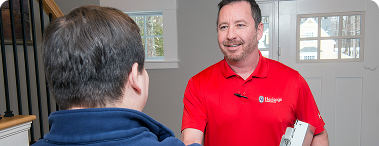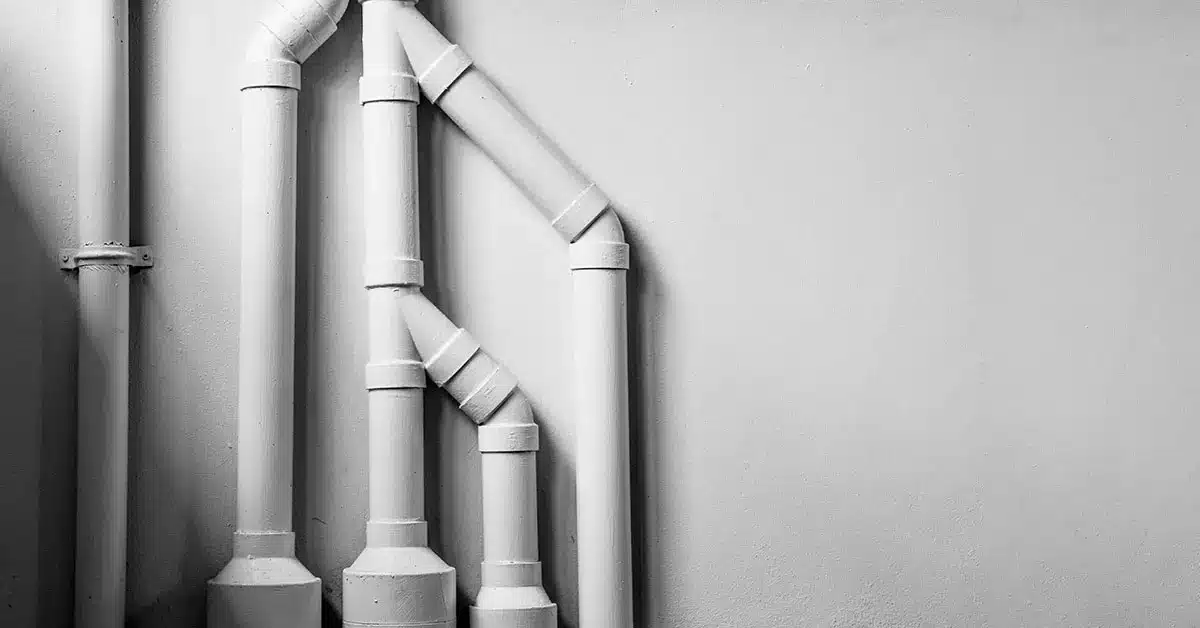Drainage in residential and commercial buildings follow the same principle: gravity pulls wastewater along drain pipes into the municipal septic tank or sewer system. This is different from water supply systems that use pressure to move the water into a building; drain pipes are slanted downward to remove wastewater through the force of gravity.
Plumbing wet vents allow the natural pressure in pipes to equalize and push wastewater and other material along. Without the push added by wet vents in the drainage pipes, you would have to siphon water or remove it artificially.
Wet vent plumbing has been in practice since 1920 when the first plumbing code was established. However wet vents have only recently been added to the Uniform Plumbing Code (UPC).

What Is a Wet Vent?
A wet vent is a pipe that simultaneously serves as a waste pipe and vent. Wet vents also protect the drain’s trap for other fixtures connected to the system.
Some folks think that wet vents are installed to get rid of bad smells, but venting is not that simple. We use wet vents to help balance the atmospheric pressure in waste pipes, allowing sewerage and water supply systems to work correctly.
Every bathroom fixture needs venting. If a fixture does not have a vent, it could lead to several problems such as slow water draining, gurgling noises, unpleasant odors, and emission of methane gas, which poses a health risk for your family.
Dry Vent vs. Wet Vent
How does a wet vent differ from a dry vent?
- A wet plumbing vent drains water from one fixture while ventilating the air
- A dry vent only transports air and does not carry water.
This is to say that wet vents may drain one fixture and vent another, whereas dry vents typically vent air from a single fixture at a time. Many choose wet vent plumbing systems because they save money, time, and materials.
Wet Vent Codes and Rules
You should be aware of the following codes and rules when installing wet venting. It is essential to remember that codes vary by state and city. The guidelines below are universal to both Canada and the United States:
- While wet plumbing vents are better for two or more bathroom fixtures simultaneously, all the fixtures should be on the same floor. They cannot be installed on separate floors.
- When connecting a toilet in the wet vent system, the toilet should be lower than other fixtures utilizing the same vent. This rule has no exceptions.
- Install a pipe supporter in every 4 feet of straight plastic pipe. The clips ensure secure holding of your pipes and help for abnormal pipe configurations. Most professionals like Heritage recommend using economical plastic pipe-hanging straps with roofing nails.
- You can install wet vents to your preferred length, but most building codes have a recommended minimum size for wet vents. This is because extremely short pipes may cause a hydraulic overload. Ensure that you check your local plumbing codes before starting your project.
- The angle connecting the wet vent to the horizontal drain at an angle of at least 45 degrees. Ensure that pipes are the correct size. The size of the pipes determines the amount of hydraulic load they can hold.
- It is essential that your wet vent pipe is large enough to prevent unnecessary problems. A small wet vent can cause leaks, hydraulic overload, clogging, and other problems. If you’re in doubt, use a 3-inch wet vent and a 4-inch waste line pipe. If you adhere to these rules, your plumbing system will pass inspection and function properly for many years.
Signs of Poor Wet Venting
Poor venting on drain lines leads to ineffective movement of wastewater and solid waste from a building. This could result in backed-up toilets, overflowing drains, and other plumbing issues. Fixing this issue could simply involve unclogging the drain line – or it could need more substantial work to locate and fix drain lines. Consulting a professional plumber like Heritage Home Service can help you find the right solution.
Slow Drainage
Slow drainage is the most obvious sign of a poorly done wet vent. If your bathroom drains are emptying slowly, it may also be because of a blockage or clog along the drain line – so you should rule out this possibility first.
Gurgling Sounds
Proper drainage should not make noise. Any sound coming from your drain lines could indicate poor ventilation, such as gurgling sounds from your toilets or bathroom sink drains. Gurgling sounds happen when there is restricted airflow in pipes, making it difficult for wastewater and material to move within the drain line.
Bubbles in the Toilet Bowl
If you notice bubbles in your toilet bowl’s water, it could mean a venting problem. Bubbles usually form when your pipes try to get enough air to balance internal pressure.
Sewer Odors
Toilet and sink drains have a trap holding small amounts of water after draining the toilet or sink. The water creates a seal that stops odors and gases from leaving the drain system and bringing unpleasant smells into your home. If there isn’t enough air pressure from the vent, that water can be lost. When these traps go dry, sewer odors won’t have anything blocking them from escaping into your living spaces.
Empty Toilet Bowls
If your toilet bowl does not refill after flushing, or the water level in the tank or bowl falls or rises suddenly, it could mean venting issues in the drain. If there isn’t enough pressure in the drains, water in the tank or toilet bowl may flow away, resulting in inconsistent water levels.
Your Local Expert Plumbing Company
When doing wet vent plumbing, you need to review and strictly follow all codes and rules regarding wet vent installation. Failure to do this means that your project won’t be approved by your local plumbing inspector. Save yourself the frustration and expense of redoing your work by calling Heritage Home Service to handle your wet vents.
Heritage’s highly trained and licensed plumbers have the knowledge and experience to keep your plumbing, air conditioning, heating, and electrical systems operating flawlessly. Contact our office today for assistance.

Financing Made Easy
When you choose Heritage, you can rest easy knowing that we provide straightforward options to help you budget for a complete solution that will last you for decades to come.
VIEW FINANCING OPTIONS
Complete Care Plan
With Complete Care, enjoy peace of mind knowing your home's plumbing, heating, cooling, and electrical needs are handled year after year—hassle-free, with added benefits.
VIEW PLAN







